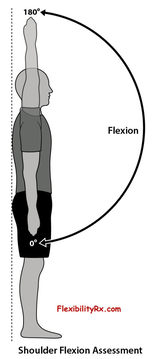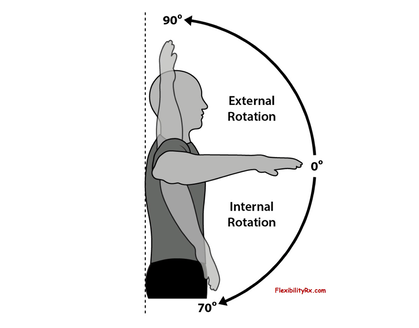Pull-Ups and Shoulder Health - Part 1
Sep 13, 2018Whether you’ve never stepped into a gym or are a diehard fitness enthusiast, chances are you’ve attempted a pull-up. That’s a good thing! It’s hard to argue an exercise that is more foundational to upper body strength than the pull-up. That being said, for how much I love this exercise and think it is something everyone should be doing (or at least a type of modification), I treat patients all the time in the clinic with shoulder pain related to the pull-up. Whether it be mobility issues, strength, or poor technique, there are a number of reasons why your shoulder can hurt during or after pull-ups and this article is the first of a two-part series that will teach you how to keep hitting your pull-ups pain-free!
Part 1: Mobility
First and foremost, let’s take a look at what exactly is happening at the shoulder joint while doing a pull-up. When you raise your arms over your head to get in the starting position for this exercise, your shoulder joint has to do a combination of two movements: flexion and external rotation. If you're limited in any of these two ranges of motion your body will make compensations to get your arm in position, which will eventually set you up for a higher risk of injury. Think of it this way: If your car tires are out of alignment, nothing will happen right away, but eventually there is going to be uneven tread wear and you’ll end up blowing a tire sooner than later. The same can be said for your shoulder if you're lacking requisite mobility with either shoulder flexion or external rotation. The videos below are great ways to test if you have enough shoulder range of motion, as well a favorite drill of ours to improve any range that needs work.
1. Flexion

(Shoulder Flexion Self-Assessment (Performed by Norcal Strength and Conditioning)
- The above video is performed by NorCal Strength and Conditioning and is a great way to assess your flexion range of motion. The crucial part to this drill is keeping your back completely flat against the wall and if you can’t bring your hands to the wall then you need to improve your shoulder flexion range of motion. A great place to start is by trying the two drills listed below. Always test and retest to make sure you're seeing an improvement!
(Banded Overhead Opener)
- This drill is an all time favorite of mine because it does two things really well. 1. It opens up your latissimus dorsi, which a lot of people need work with, and 2. It provides a distraction mobilization at the joint capsule itself, which is really important for improving range of motion.
(Thoracic Spine Opener)
- If you watched this video and thought to yourself, “What in the world does my back have to do with my shoulder mobility?" - you’re not alone. However, your thoracic spine being able to extend appropriately is crucial to being able to reach fully overhead without restriction.
2. External Rotation

(Shoulder External Rotation Self-Assessment - Performed by Michael Carroll)
- Just as above, this video covers a quick and easy way to make sure you have adequate external rotation. If you notice you're tight with this movement, or that you have to really arch your back to get in the correct position, then try the two drills below and reassess!
- If the above position was difficult to achieve, chances are you have some tightness across your chest, specifically with your pec major. This muscle (in addition to putting up big numbers on your bench!) internally rotates your shoulder, so if it’s tight it will prevent external rotation.
(Front Rack Opener)
- This drill is particularly great at opening up external rotation because of the PNF (proprioceptive neuromuscular facilitation) component. By doing PNF work vs just static holds you are able to “trick your nervous system” so to speak, allowing you to access an increased range of motion very quickly.
To recap, if you have shoulder pain while doing pull-ups, or want to prevent pain from coming, the first place to start is to make sure you have enough shoulder flexion and external rotation to perform the exercise without compensation. Be on the lookout for Part II of this blog post which will dive into the common mechanical flaws and strength imbalances that can lead to shoulder problems with the pull-up.
If you’re in the Atlanta area and are interested in working with a unique professional that can help you optimize your health in all of these areas, we need to talk. Being proactive and staying on top of your health will help you avoid serious health problems down the road.
Submit a contact request by clicking the button below and we’ll get you set up with one of our Doctors for a free 15-minute phone consult.
Thanks for reading,
Dr. Jacob, PT, DPT, CSCS
Let us help you figure out to live your best active life today!
Remember, Movement is Medicine!

